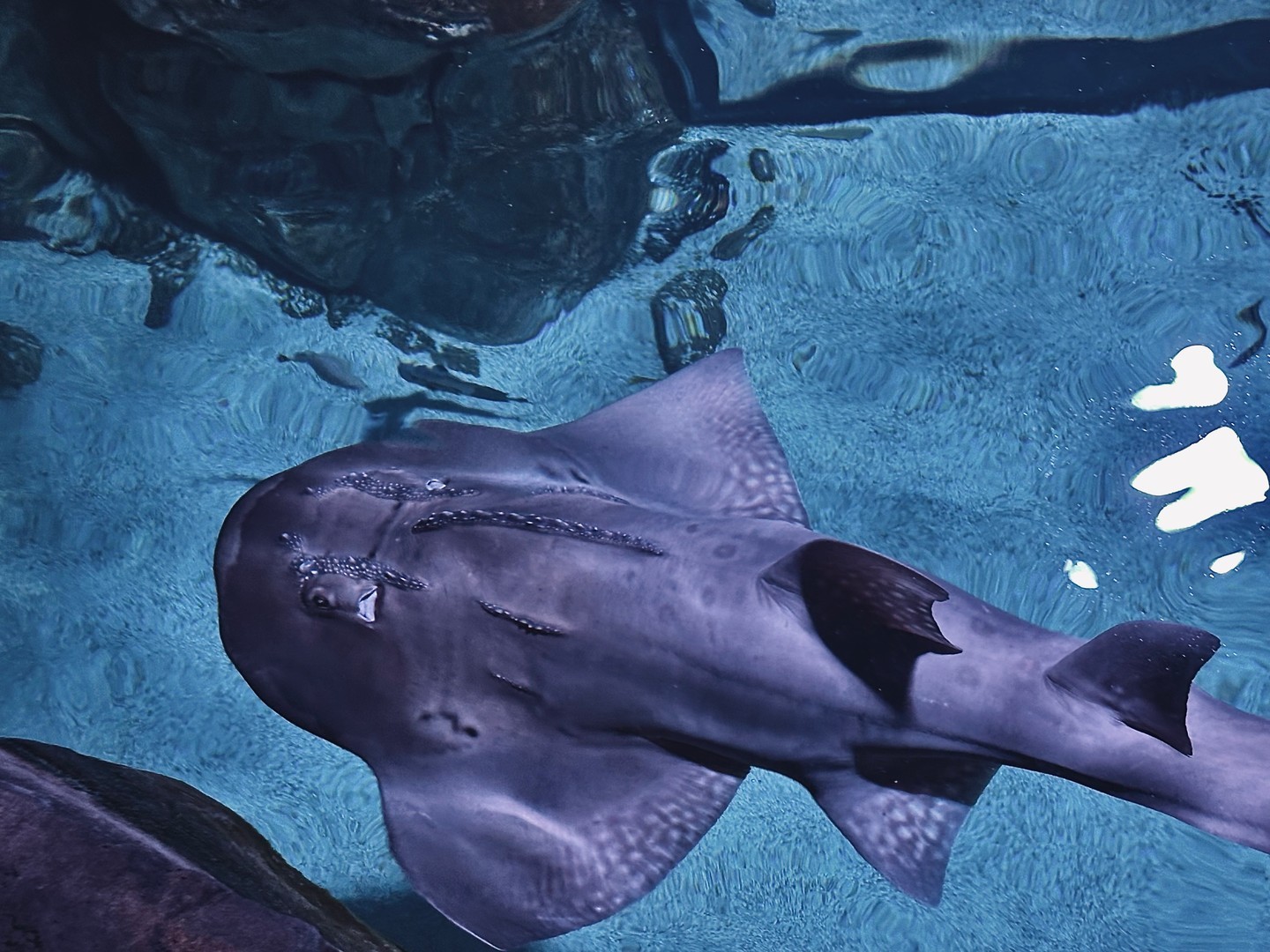- Introduction to Shan the Shark Ray and her distinctive camouflage
- Detailed explanation of the reasons behind Shan’s spots and their role in her environment
- Importance of understanding and appreciating shark rays in wildlife conservation
- Insight into zoo management strategies for presenting and protecting species like Shan
- Visitor experience and conservation education opportunities at the zoo
Shan the Shark Ray, often seen gliding gracefully underwater, draws attention not just with her behavior but also with her striking fins. When Shan feels like showing off her fins, it’s not purely for spectacle. Beyond their aesthetic appeal, her spots serve a practical purpose—camouflage.
Spots as Camouflage
The spots on Shan the Shark Ray are essential for her survival. These patterns help her blend into the seafloor, mimicking the speckled appearance of sand and stones. This camouflage is crucial for predator avoidance and hunting efficiency. In environments with varied textures and light conditions, such patterns can make a difference between life and death.
Zoologists have long studied patterns like those on Shan to understand how animals interact with their environments. The spots disrupt the visual outline of Shan’s body, making it difficult for predators and prey alike to detect her. This form of passive camouflage is a fascinating aspect of marine biology, emphasizing adaptation and the ongoing evolution of species in response to their habitats.
Significance in Wildlife Conservation
Understanding the biology and behavior of animals like Shan is critical for wildlife conservation. Shark rays are a vulnerable species, facing threats from habitat loss, fishing practices, and climate change. Conservation efforts must focus on protecting their natural habitats and mitigating human-induced threats.
Research on animals like Shan can inform conservation strategies. By studying her behavior and ecological needs, conservationists can design protected marine areas and implement sustainable fishing regulations. This research also underpins breeding programs and rehabilitation projects that aim to bolster shark ray populations. These efforts are vital for maintaining biodiversity and ecosystem health.
Zoo Management and Animal Welfare
Zoo management plays a pivotal role in the conservation of species like Shan. By providing a safe and enriching environment, zoos can support the health and well-being of these animals. This involves meticulous planning and ongoing care.
Enclosures for shark rays must replicate their natural habitats as closely as possible. This includes considerations for water quality, temperature, and the physical structure of the enclosures. Behavioral enrichment is also crucial. Activities that stimulate Shan’s natural behaviors, such as foraging and exploring, are incorporated into her daily routine. This not only enhances her physical health but also her mental well-being.
Furthermore, zoos are essential platforms for education and advocacy. Exhibits like Shan’s bridge the gap between the public and wildlife, fostering a deeper appreciation and understanding of these animals. Educational programs can highlight the importance of conservation and the steps individuals can take to protect marine life.
Visitor Experience and Education
Visitors to the zoo can cross the Shark Bridge and get an up-close look at Shan the Shark Ray. This experience is designed to be both informative and engaging. Observing Shan’s behavior and the distinctive spots on her fins provides a practical example of adaptation and survival.
Educational signage and interactive displays around the exhibit offer insights into Shan’s life and the broader aspects of marine biology. Information on how camouflage works, the threats shark rays face, and ongoing conservation efforts can deepen visitors’ understanding and spark a sense of stewardship for marine environments.
Promotions like the SAVE with Plan Ahead Pricing encourage more people to visit and learn about marine life. Increased foot traffic and engagement lead to greater awareness and support for conservation initiatives. These programs are vital for funding ongoing research and habitat protection efforts.
In essence, every visitor who crosses that bridge is contributing to the story of wildlife conservation. Through education and firsthand experiences, they become advocates for the ocean and its inhabitants.
By highlighting the intricate details of Shan the Shark Ray’s camouflage and its importance, this article serves as a bridge between scientific understanding and public interest. The collaborative efforts of zoologists, conservationists, and zoo management ensure that future generations will continue to marvel at the beauty and wonder of marine life. So, the next time you find yourself by the Shark Bridge, take a moment to appreciate the delicate balance that species like Shan help to maintain in the vast underwater world.
*****
Source Description
Sometimes Shan the Shark Ray feels like showing off her beautiful fins! Those spots aren’t just stylish, they are used for camouflage! Take a closer look at our new friend as you cross Shark Bridge during SAVE with Plan Ahead Pricing at the Link in Bio


